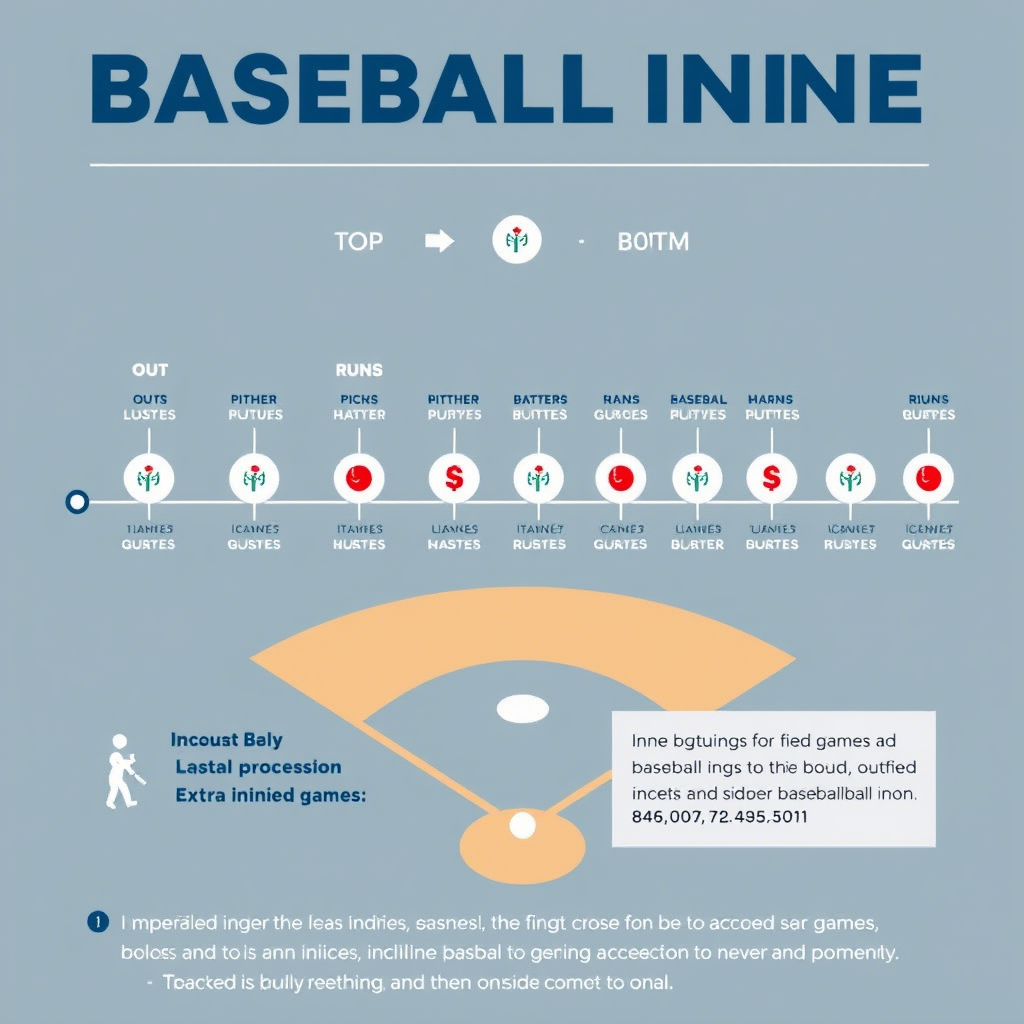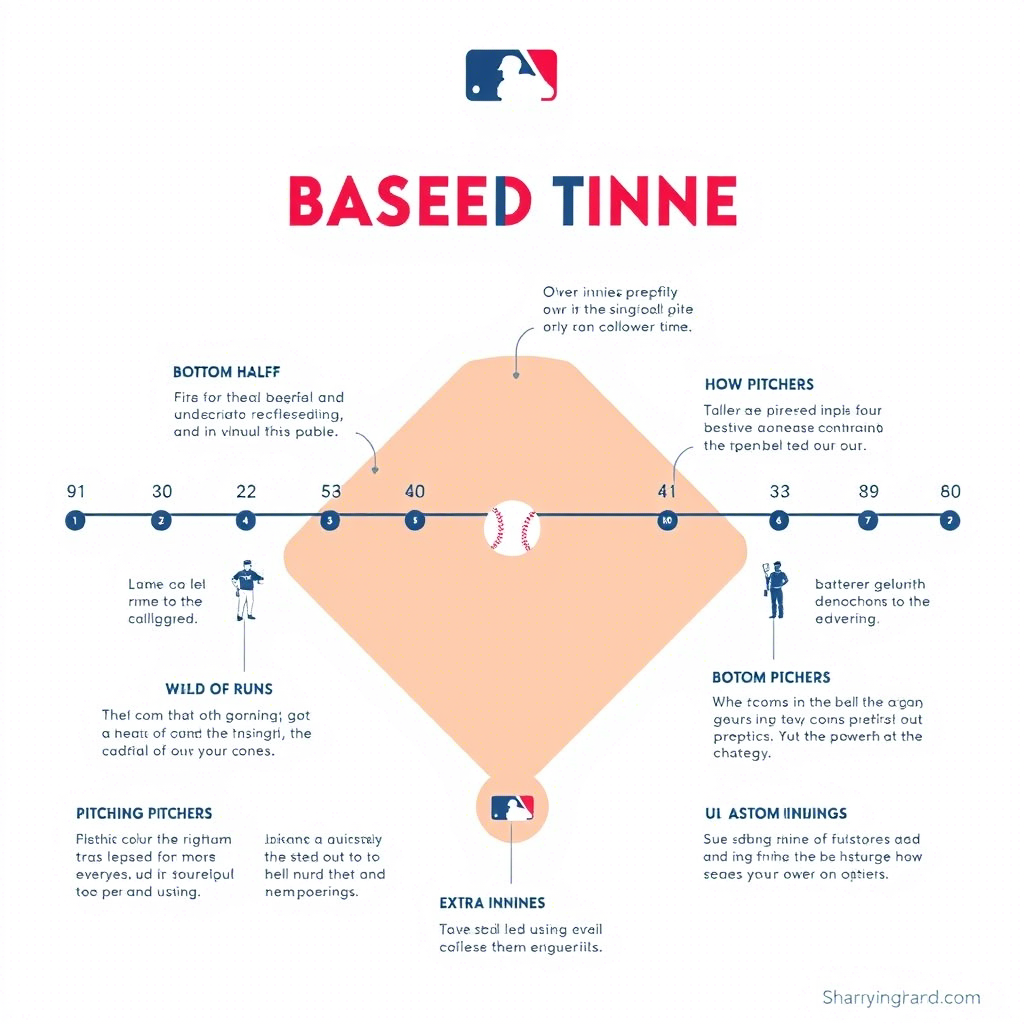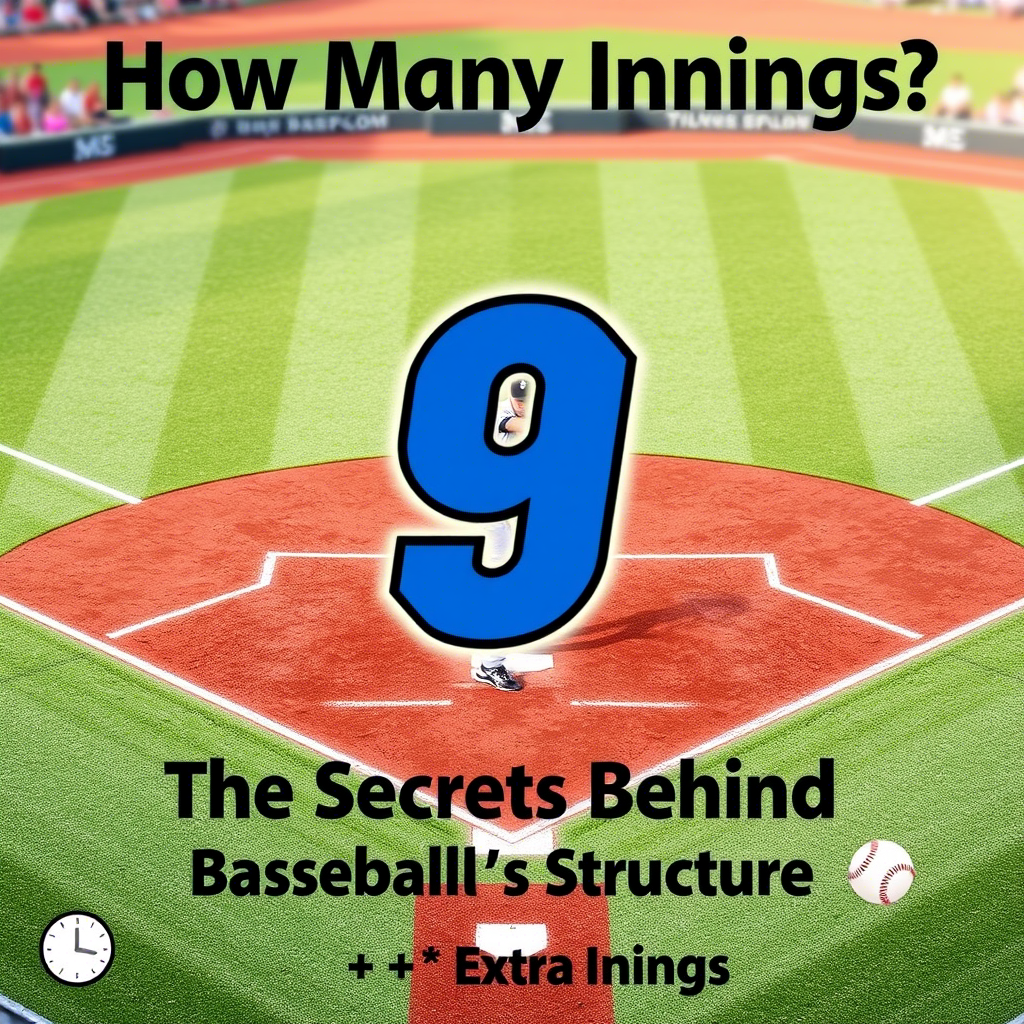Baseball is more than just a sport; it’s a cultural institution that has shaped American identity for generations. Often referred to as “America’s pastime,” baseball is beloved for its unique blend of strategy, athleticism, and tradition. At the heart of this timeless game lies its structure—specifically, the number of innings that define its rhythm and flow. For those unfamiliar with the sport, one of the most common questions is: How many innings are in a baseball game?

While seasoned fans might quickly answer “nine,” the full story is far richer and more nuanced. The nine-inning format is the standard, but there are exceptions, variations, and fascinating historical anecdotes that make baseball’s inning structure both practical and poetic. In this article, we’ll dive deep into the origins, mechanics, and quirks of baseball’s innings, exploring everything from extra-inning thrillers to rain-shortened games. By the end, you’ll not only know how many innings are in a baseball game but also understand why this format works so well—and why it continues to captivate millions worldwide.
The Standard Format: Nine Innings in Major League Baseball
In Major League Baseball (MLB), the pinnacle of professional baseball in the United States, a regulation game consists of nine innings . Each inning is divided into two halves: the top half , where the visiting team bats, and the bottom half , where the home team takes their turn at the plate. This alternating structure creates a natural give-and-take, allowing each team equal opportunities to score runs and defend their lead.
Why Nine Innings?
The decision to standardize games at nine innings dates back to the mid-19th century, during baseball’s formative years. Before 1857, games were often played until one team scored a predetermined number of runs—a system known as “playing to 21.” However, as the sport grew in popularity, organizers sought a more consistent format. At a convention held by the National Association of Base Ball Players in 1857, delegates agreed to set the length of a game at nine innings.
This choice wasn’t arbitrary. Nine innings struck a balance between providing enough time for meaningful competition while keeping games manageable in duration. Additionally, the number nine aligned neatly with the nine players on the field, creating a sense of symmetry that resonated with early baseball enthusiasts. Over time, this format became ingrained in the fabric of the sport, enduring through centuries of evolution.
What Happens During an Inning?
To truly appreciate the significance of nine innings, let’s break down what happens during each one. Unlike timed sports like basketball or soccer, baseball measures progress in outs rather than minutes. An inning ends when both teams have recorded three outs in their respective halves. Here’s how it typically unfolds:
- Top of the Inning: The visiting team comes to bat, attempting to score runs against the home team’s pitcher and defense.
- Bottom of the Inning: Once the visiting team records three outs, the roles reverse, and the home team steps up to bat.
This cycle repeats until all nine innings are completed—or longer, if necessary (more on that later). Because innings depend on outs rather than clock time, no two games unfold at exactly the same pace. Some innings breeze by in mere minutes, especially if pitchers dominate batters. Others stretch out as hitters and pitchers engage in tense battles, prolonging the drama.
Related post :- {Wheelchair Tennis at the Paralympics 2024: A Celebration of Skill, Resilience, and Inclusion}
Beyond Regulation: Extra Innings and Tie Games
While nine innings define a regulation game, sometimes neither team emerges victorious after the final out of the ninth inning. If the score is tied, the game moves into extra innings , where play continues inning by inning until one team holds a lead at the end of a complete inning.
How Extra Innings Work
Extra innings follow the same structure as regular innings, with both teams getting a chance to bat. However, the stakes are higher, as any mistake can cost a team the game. For example:
- Imagine a game tied 4-4 after nine innings. Both teams would continue playing additional innings, starting with the 10th.
- If the visiting team scores two runs in the top of the 10th but the home team only scores one in the bottom half, the visiting team wins.
- Conversely, if the home team manages to tie or take the lead anytime during their half of the inning, the game can end immediately—a phenomenon known as a “walk-off” win.
Walk-offs are among the most thrilling moments in baseball, often celebrated with jubilant celebrations on the field. They underscore the unpredictable nature of extra-inning games, where momentum can shift in an instant.
Historical Examples of Marathon Games
Extra-inning games add drama and unpredictability to baseball, and some contests have stretched incredibly long. One of the most famous examples occurred in 1981, when the Pawtucket Red Sox and Rochester Red Wings played a minor-league game that lasted 33 innings over three days! The marathon began on April 18 and resumed twice more before finally concluding on June 23, setting a record for the longest professional baseball game ever played.
At the MLB level, the longest game by innings took place in 1920, when the Brooklyn Robins (now Dodgers) and Boston Braves played 26 innings before darkness forced a suspension. These extreme cases highlight just how flexible baseball’s structure can be, accommodating games of varying lengths without compromising fairness.
Shortened Games: Rainouts, Suspensions, and Doubleheaders
Not every baseball game reaches the full nine innings. Sometimes external factors intervene, leading to shortened contests. Let’s explore some common scenarios where games fall short of the standard format.

Weather Interruptions
Rain delays and rainouts are part of baseball lore, particularly in outdoor stadiums. If inclement weather forces a stoppage before five innings are completed, the game is typically suspended and resumed later. However, once five innings are in the books (or 4.5 innings if the home team is ahead), the game becomes official—even if it never resumes.
For example, consider a scenario where heavy rain halts a game after four innings with the score tied 2-2. Since fewer than five innings have been completed, the game would be suspended and rescheduled. On the other hand, if the home team leads 5-3 after 4.5 innings when the rain hits, the game would count as an official victory for the home team.
Mercy Rule in Amateur Leagues
At lower levels of play, such as Little League or high school baseball, games may feature fewer innings due to time constraints or skill disparities. Additionally, some leagues employ a “mercy rule,” ending the game early if one team builds an insurmountable lead. For instance, in many youth leagues, a game might conclude if one team leads by 10 or more runs after a certain number of innings.
Seven-Inning Games in Doubleheaders
In MLB, doubleheaders—two games played on the same day—are occasionally scheduled to make up postponed matches. Until recently, these twin bills featured two full nine-inning games. However, since 2020, MLB adopted a rule change allowing seven-inning games during doubleheaders to reduce player fatigue and streamline scheduling. This adjustment has sparked debate among purists who argue that seven-inning games dilute the integrity of the sport, but it reflects the league’s efforts to adapt to modern demands.
Why Nine Innings Works So Well
The nine-inning structure strikes a perfect balance between fairness, excitement, and endurance. Unlike timed sports like basketball or soccer, baseball’s inning-based system ensures that every game progresses through a set number of opportunities for each team. This consistency allows players and fans alike to anticipate key moments, such as late-game comebacks or clutch performances.

Moreover, the nine-inning format gives pitchers, hitters, and fielders ample opportunity to showcase their skills without dragging on endlessly. On average, MLB games last around three hours—a sweet spot that keeps audiences engaged without overstaying their welcome. The predictability of nine innings also makes it easier for broadcasters, statisticians, and analysts to track performance metrics and trends.
Fun Facts About Innings in Baseball History
To wrap things up, here are a few tidbits that illustrate the quirky side of baseball’s inning structure:
- Shortest Game Ever: In 1916, a game between the Asheville Tourists and Winston-Salem Twins ended after just one inning due to darkness. Yes, you read that right—one inning!
- Most Innings Played: As mentioned earlier, the record for the longest professional game belongs to the 33-inning epic between Pawtucket and Rochester. It spanned parts of three calendar days and included legendary players like Cal Ripken Jr., who appeared briefly for Rochester.
- Experimental Formats: Over the years, various leagues have experimented with different inning counts. For example, Japan’s Nippon Professional Baseball uses the same nine-inning standard as MLB, but international tournaments like the World Baseball Classic occasionally tweak formats for efficiency.
Conclusion: The Beauty of Baseball’s Structure
So, how many innings are in a baseball game? The simple answer is nine—but as we’ve seen, the story behind that number is anything but straightforward. From the strategic depth of extra innings to the occasional chaos of rain-shortened games, baseball’s inning-based framework provides endless possibilities for drama and excitement.
Whether you’re a lifelong fan or someone just dipping your toes into the world of baseball, understanding the role of innings enriches your appreciation of the sport. After all, those nine carefully crafted segments aren’t just arbitrary divisions—they’re the heartbeat of America’s pastime, pulsing with tradition, strategy, and timeless appeal. Next time you settle in to watch a game, pay attention to the rhythm of the innings. You might just discover a new layer of love for the grand old game.
